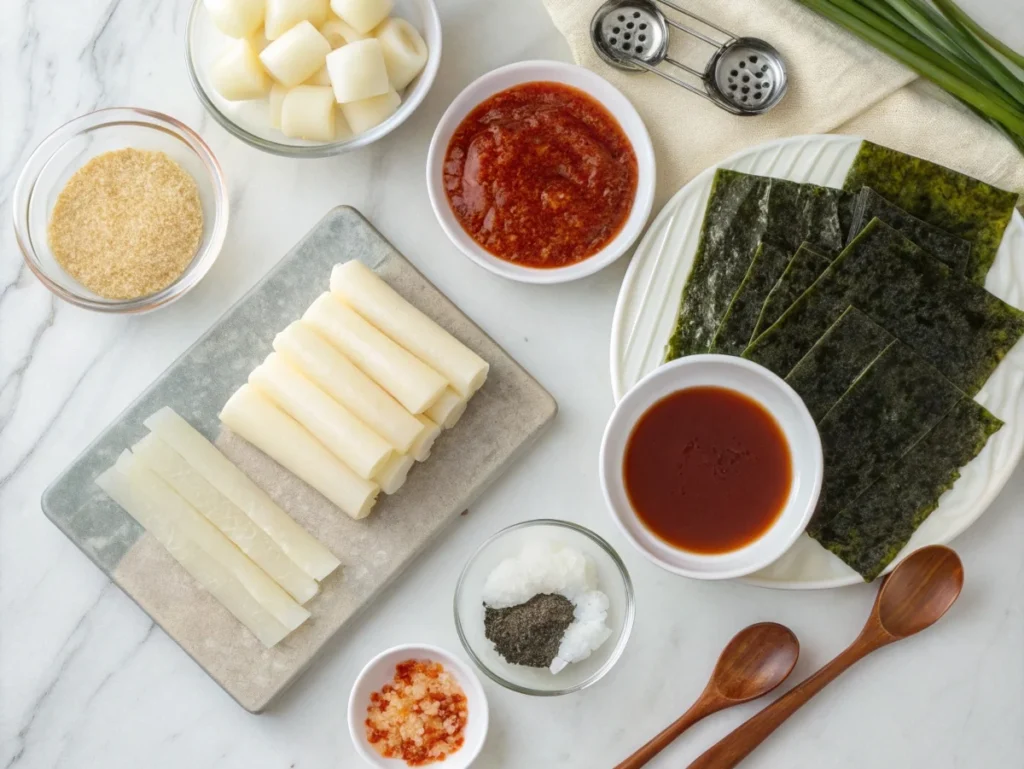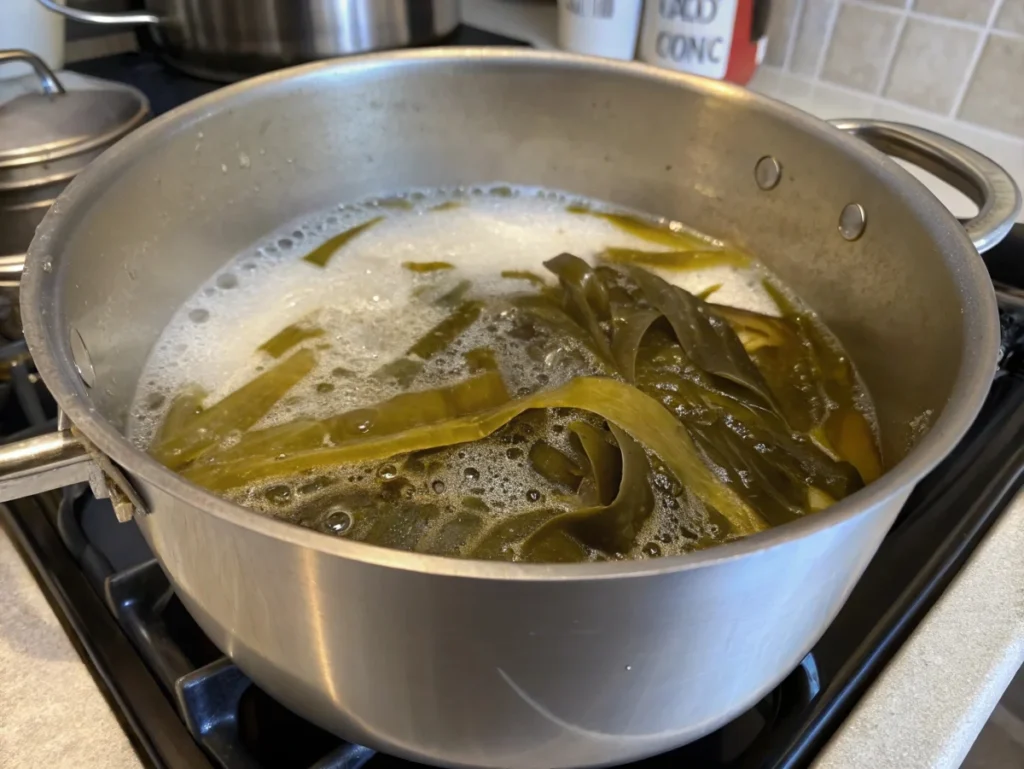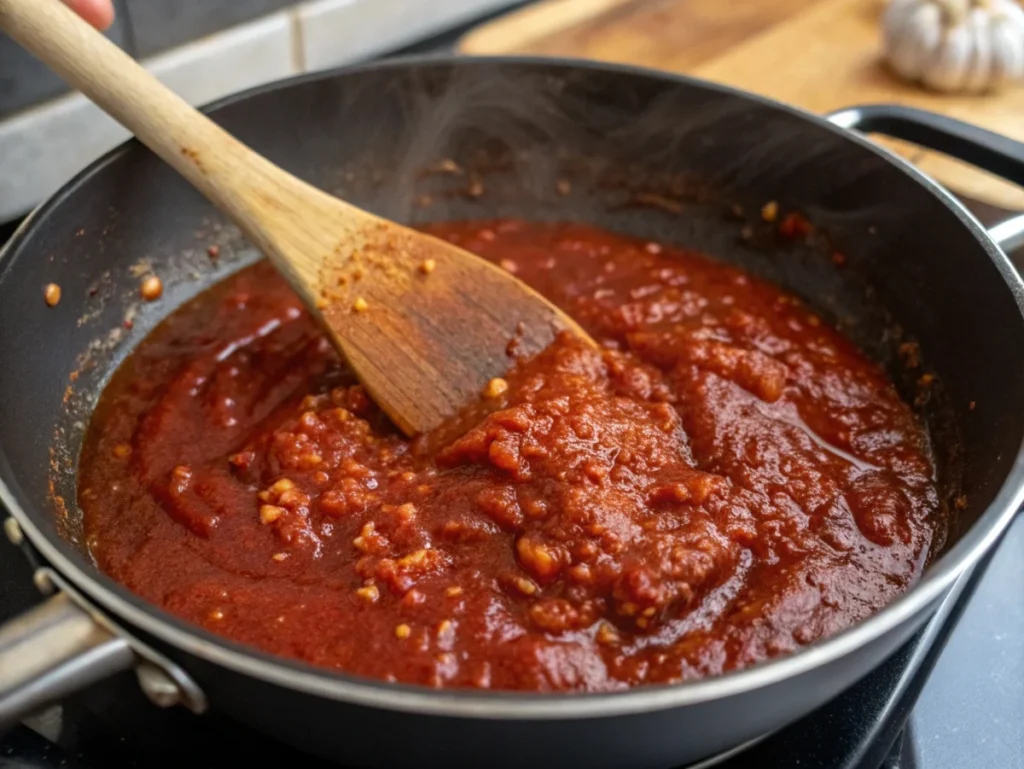Tteokbokki Recipe for Beginners Who Love Korean Food
Are you craving bold, spicy flavors but think Korean cooking is too complex to try at home? You’re not alone. According to Google Trends, searches for “easy Korean recipes” have surged in the past year. The good news? You don’t need to be a professional chef to master an authentic Tteokbokki recipe. This beloved Korean street food is not only easy to make, but it also packs a delicious punch that keeps food lovers coming back for more. Whether you’re a K-drama binge-watcher or simply curious about Korean cuisine, this beginner-friendly guide is your perfect starting point.

Table of Contents
What Is Tteokbokki?
A Quick Dive into Korean Street Food Culture
Korean street food is vibrant, chaotic, and deliciously immersive. At the heart of it all is Tteokbokki—a dish that dominates street stalls, attracting crowds with its vibrant hue and enticing aroma. Vendors ladle it fresh from large bubbling pots, often beside skewered fish cakes and crispy tempura.
The Origins and Evolution of Tteokbokki
Tteokbokki didn’t always wear a spicy cloak. The earliest versions, dating back to the Joseon Dynasty, were soy-based and more elegant, reserved for royal court cuisine. It wasn’t until the 1950s that gochujang entered the scene, transforming Tteokbokki into the iconic dish we know today—bold, accessible, and deliciously addictive.
Ingredients List

Let’s talk flavor. Tteokbokki is all about tender, chewy rice cakes smothered in a bold, spicy-sweet sauce. Here’s what you need:
- 1 pound of Korean rice cakes (tteok), either refrigerated or frozen – use cylindrical or sliced shapes.
- 4 cups water
- 2 sheets dried kelp (kombu) – for a deep umami base
- 1/2 cup Korean fish cakes – sliced into strips (optional but traditional)
- 2 tablespoons gochujang (Korean chili paste)
- 1 tablespoon gochugaru (Korean chili flakes) – adjust to spice preference
- 2 tablespoons soy sauce
- 1 tablespoon sugar
- 1 teaspoon minced garlic
- 1 boiled egg per serving (optional)
- 1 scallion, sliced – for garnish
- Sesame seeds (optional)
Substitutions:
- No gochujang? Combine tomato paste and sriracha for a fast and flavorful shortcut.
- Fish cake alternatives: tofu, mushrooms, or shrimp.
- For gluten-free: use tamari instead of soy sauce.
Timing
You’ll love this: Tteokbokki takes just 35 minutes from prep to plate. That’s 25% quicker than most Korean stew-style dishes!
- Preparation time: 10 minutes
- Cooking time: 25 minutes
- Total time: 35 minutes
How to Make Tteokbokki Recipe
Step 1: Soak the Rice Cakes
Place your rice cakes in warm water for 10-15 minutes if they’re refrigerated or frozen. This helps soften them and ensures an even texture.
Step 2: Make the Broth
In a large saucepan, combine water and kelp. Bring it to a gentle boil, then reduce the heat and let it simmer for 10 minutes. Remove the kelp for a clean, briny broth.

Step 3: Create the Sauce
Stir in gochujang, gochugaru, soy sauce, sugar, and garlic. Mix until smooth and simmer for 2-3 minutes to meld the flavors.

Step 4: Add the Rice Cakes
Add soaked rice cakes and fish cakes to the broth. Simmer over medium heat for 10–15 minutes, stirring often to keep it from sticking.
Step 5: Garnish and Serve
When the sauce has thickened to your preference, remove from the heat. Finish with boiled eggs, sliced scallions, and a sprinkle of sesame seeds. Serve piping hot!
Nutritional Information
Here’s what you’re getting per serving (approximate):
- Calories: 320
- Carbohydrates: 52g
- Protein: 7g
- Fat: 9g
- Sugar: 7g
- Sodium: 870mg
- Fiber: 2g
Calculated using a standard serving that includes fish cakes and one boiled egg.
Healthier Alternatives for the Recipe
Want to indulge guilt-free? Try these tweaks:
- Swap fish cakes with sliced mushrooms for a vegetarian version.
- Use brown rice cakes for extra fiber and complex carbs.
- Reduce sodium by using low-sodium soy sauce.
- Cut sugar in half and add a splash of apple juice or grated apple for natural sweetness.
- Add veggies: Toss in cabbage, carrots, or spinach for a nutrient boost.
Serving Suggestions with Tteokbokki Recipe
Tteokbokki is versatile and crowd-pleasing. Here are some tasty ways to enjoy it:
- Enjoy it as a snack or light bite, served alongside tangy kimchi.
- Pair with ramen noodles for Rabokki – a spicy, satisfying twist.
- Top with melted cheese for Korean street-style fusion.
- Serve in a hot pot with dumplings, eggs, and tofu for a full meal.
- Add rice or toast to soak up the leftover sauce!
Common Mistakes to Avoid
Even simple dishes have their pitfalls. Avoid these common missteps:
- Skipping the soak: Rice cakes need to be softened first or they’ll remain tough.
- Overcooking: Too long on the stove turns rice cakes mushy.
- Not stirring: The sauce thickens fast and can burn if left unattended.
- Using too much gochugaru: Balance is key – go easy unless you love intense heat.
- Skipping the broth is a mistake—plain water falls flat, while kelp or anchovy stock brings essential depth of flavor.
Storing Tips for the Tteokbokki Recipe
Got leftovers? No problem:
- Refrigerate in an airtight container for up to 3 days.
- Warm it gently over low heat, adding a splash of water or broth to loosen the sauce.
- Avoid freezing cooked tteokbokki; rice cakes can become overly mushy when thawed.
- Prep ahead: Soak rice cakes, slice ingredients, and pre-make sauce for a quick weeknight meal.
Conclusion
Tteokbokki is a bold and comforting Korean classic that’s easier to make than you’d think. With the right ingredients and a few easy steps, you can bring a taste of Seoul right to your kitchen. Try this Tteokbokki recipe for dinner today, and let us know how it turned out in the comments!
Have You Made This Recipe at Home?
There are no reviews yet. Be the first one to write one.
FAQs
Can I make Tteokbokki without gochujang?
Absolutely! You can swap it with a blend of tomato paste, sriracha, and a splash of soy sauce for spicy, savory depth.
What type of rice cakes should I use?
Cylindrical ones are traditional, but sliced oval cakes also work. Just ensure they’re Korean-style.
Is Tteokbokki gluten-free?
With gluten-free gochujang and tamari, yes. Always check ingredient labels for confirmation.
Can I add protein?
Of course! Hard-boiled eggs, tofu, shrimp, or shredded chicken all make great additions for extra heft.
What does Tteokbokki taste like?
Chewy, spicy, slightly sweet, and oh-so comforting—think of it as a delicious fusion of pasta and stew with a Korean kick.
